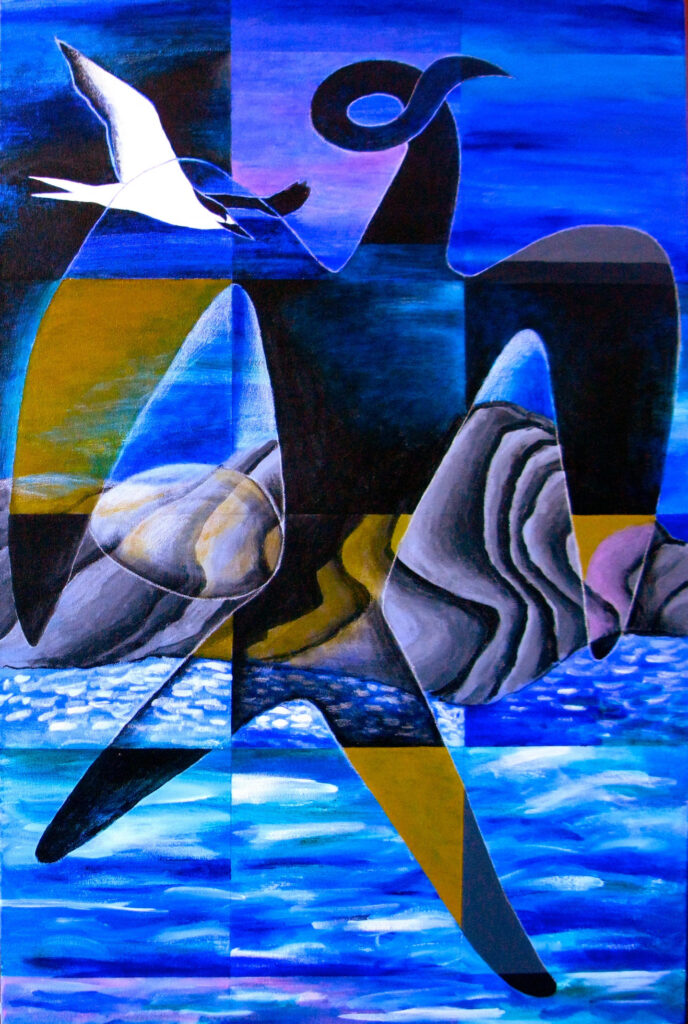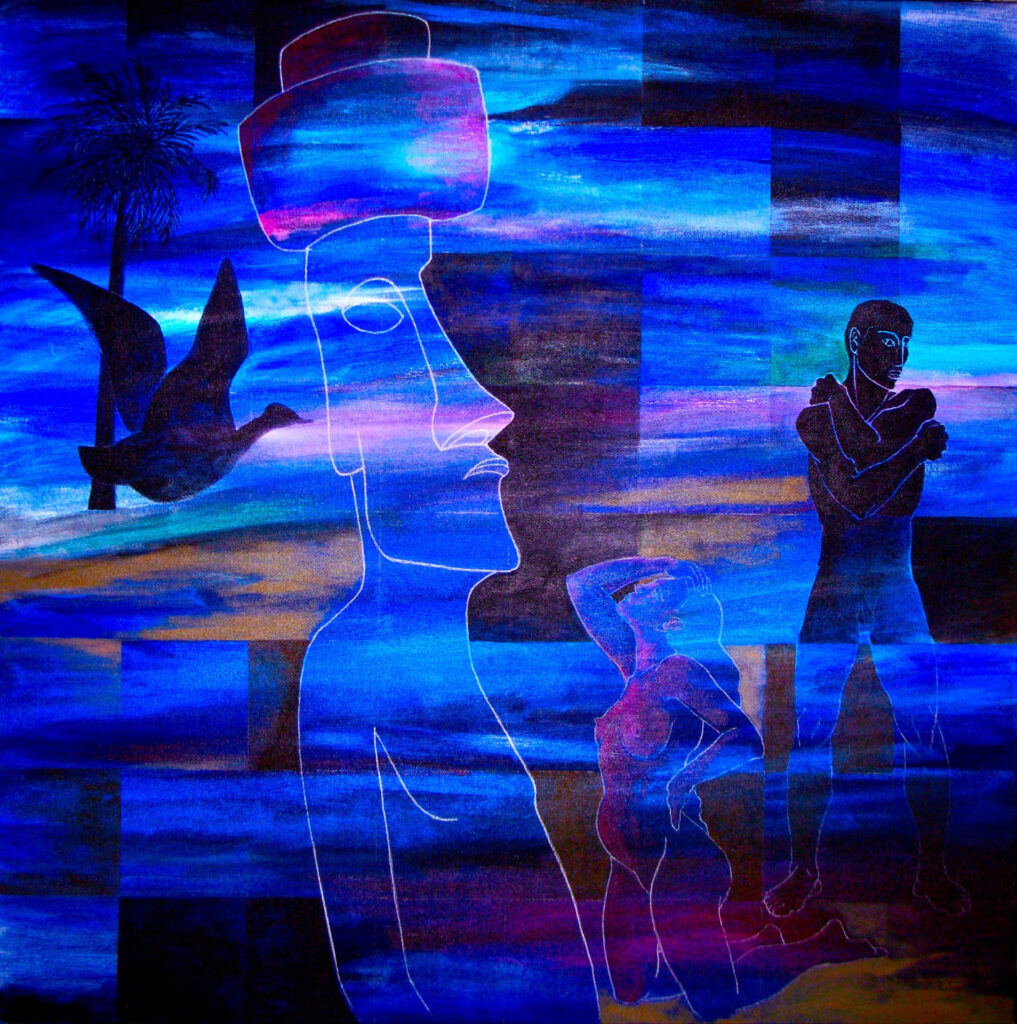
Stone-cut survivors of ancient dimensions…the holy star singing thy will be done’ are lyrics by Kris Kristofferson from his song, “Easter Island.” The silent monoliths he sings of tell of a culture lost to time on the isolated Polynesian Easter Island. Stone sculptures, monolithic humanoid figures created between the thirteenth and sixteenth centuries by the Rapa Nui people, the island’s mysterious historical inhabitants, grace the island’s perimeter, with silent countenances turned toward the vast surrounding sea. Called “moai,” these sculptures were moved from a volcanic quarry on the island, set on stone platforms, (“ahu,” in the Rapa Nui language), and are said to represent ancestors, temporary spirit vessels, chieftains descended from gods tasked with humanity’s protection.
On Easter Sunday in the year 1722, Europeans first came to the island as colonists from other parts of the Polynesian archipelago, though the Rapa Nui were living there since 1000 CE. According to Van Tilburg, the sculptures, carved from volcanic tuff, were only partly visible in the topography as much of the statues’ bulk was concealed under the soil. By the time Westerners arrived on the island, deforestation had taken place, ultimately creating the nineteenth century culture collapse from slave trading, colonizing and disease outbreaks, according to Mulrooney. Today, what can be seen are anthropomorphic abstracted forms, eerie protrusions from land, now bereft of arboreal palms, statues precariously maintained at the mercy of political vagaries and environmental battering.
World traveler and artist, Margo Mead, has visited Easter Island, climbing its hills, creating sobering paintings underscoring the atoll’s tenuous existence. A mythological motif significant to the Rapa Nui is the “birdman,” half man and half bird connected to the island’s sacred site, Orongo. Mead, intrigued by this therianthropic figure, exemplifies it in her pieces, Memory Unheard and The Birdman of Easter Island limited color canvases of blue and ochre, imagery segmented, referencing the annual seabird egg hunt, a contest to realize high social status among the islanders. Descending perilous cliffs, contestants swim to Motu Nui, an offshore islet, awaiting the arrival of seabirds to obtain the season’s first egg from the nest. Precious prize secured, the successful competitor swims back to Easter Island, egg in tow, to become the annual chieftain possessing formidable spiritual powers instilled from the dangerous procurement effort.

In Mead’s pieces, birds and humans are forceful, man and woman pleading and isolated from each other, the seabird, unlike humanity, mobile and unbound. The central motif of the birdman, a design both avian and human, is the unifying spiritual element depicted and inferred by the artist’s brush. Mead implies the disjointed modern relationships among humans and the planet which is conveyed by urgent and dramatic figuration within her compositions. The lyrical passage of the soaring seabird sweeps over a geometric gridwork juxtaposing nature’s freedom with humanity’s harmful constructs.
For the Rapa Nui, the birdman’s genesis was mysterious, but as the esoteric culture devolved, a warrior class, the Matatoà, took power and warfare’s detrimental effects superseded ancestor worship contributing to the demise of statue creation. No longer are there safe spiritual harbors protecting the living through their forebears. The moai, some thirteen feet high and weighing ten tons, are compared by Kristofferson to “carcasses,” now ‘keeping the secret the rest have forgotten…staring in silence from sockets of stone… no good to nothing, not even their own.’ The sculptures are enigmatic cultural remnants, with the island population now negligible and the land denuded, standing perilously at the island’s perimeter, the stones damaged by recent fires and threatened by rising seas.
Designated a UNESCO World Heritage Site, Rapa Nui National Park is located on Easter Island, the area is under Chilean government control; an attempt to preserve the island’s history. Current day Rapa Nui people are moai preservationists trying to safeguard their past in the face of financial shortfalls and poor climate stewardship by the world’s largest nations. The resultant global warming from the follies of human induced climate change threatens the viability of all low-lying islands worldwide, particularly in Polynesia. Mead and Kristofferson have chosen to publicize this dire plight in paint and song, the artworks testifying to earth’s monumental dangers threatening mass extinction. G&S
Author’s Note: The New York Times, National Geographic, The Bradshaw Foundation, Wikipedia and Margo Mead were consulted for this article by Anne Rudder.





Leave a Comment